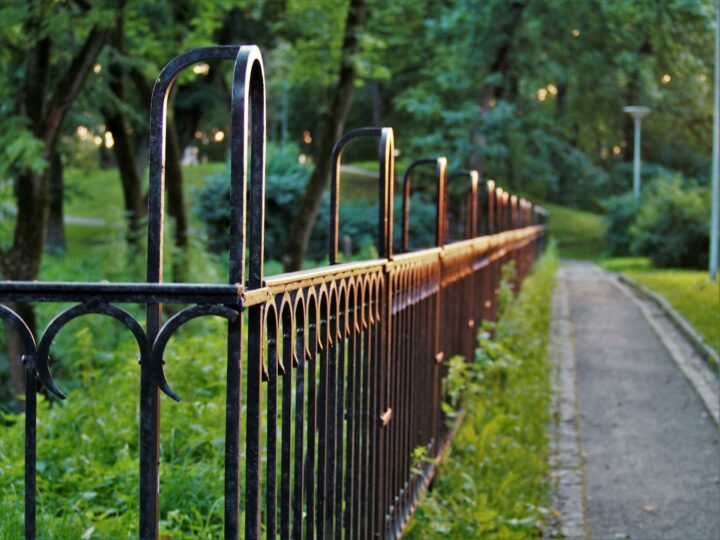The following contribution is from another author.
When it comes to crafting the perfect outdoor space, few elements are as essential as the garden fence. A well-designed fence not only adds security and privacy but also enhances the aesthetic appeal of your garden. But what exactly makes a garden fence both beautiful and effective?
Finding the Right Balance: Functionality vs. Aesthetics
Functionality: Ensuring Security and Privacy
At its core, a garden fence serves practical purposes, foremost among them being security and privacy. Before delving into the aesthetics, it’s crucial to ensure that your fence effectively fulfills its primary functions.
Key Considerations:
- Height: Determine the ideal height based on your privacy needs and local regulations.
- Material: Choose a sturdy material like wood, vinyl, or metal that provides security without compromising on aesthetics.
- Gates: Install secure gates that allow convenient access while maintaining security.
Aesthetics: Adding Beauty to Your Garden
While functionality is essential, garden fencing also presents an opportunity to elevate the visual appeal of your outdoor space. By incorporating design elements that complement your garden’s style, you can create a seamless blend of form and function.
Tips for Enhancing Aesthetics:
- Material Selection: Opt for materials that harmonize with your garden’s theme, whether it’s rustic wood for a natural look or sleek metal for a modern vibe.
- Color Palette: Choose colors that complement your garden’s foliage and existing features, creating a cohesive aesthetic.
- Decorative Accents: Add decorative elements such as lattice panels, ornamental post caps, or climbing vines to enhance visual interest.
Choosing the Right Materials
Popular Garden Fence Materials:
- Wood: Timeless and versatile, wood fences exude natural charm and can be customized to various styles, from classic picket fences to modern slat designs. However, wood requires regular maintenance to preserve its appearance and prevent decay.
- Vinyl: Low-maintenance and durable, vinyl fences are resistant to rot, fading, and insect damage. Available in a range of colors and styles, they offer both aesthetic appeal and practicality.
- Metal: Whether it’s ornate wrought iron or sleek aluminum, metal fences provide unmatched durability and security. While they may require more upfront investment, their longevity and timeless elegance make them a worthwhile choice.
- Composite: Combining the benefits of wood and plastic, composite fences offer the natural look of wood with the durability of synthetic materials. They require minimal maintenance and are resistant to rot, fading, and insect infestation.
Designing for Harmony
A well-designed garden fence seamlessly integrates with its surroundings, enhancing the overall ambiance of your outdoor space. By paying attention to key design principles, you can create a cohesive and visually appealing environment.
Harmonizing with Nature:
Natural Materials: Incorporate materials that echo the natural elements of your garden, such as weathered wood or stone accents.
Softening Effects: Soften the transition between fence and landscape with lush foliage, strategically planted shrubs, or cascading flowers.
Creating Visual Interest:
Texture Play: Experiment with different textures, such as smooth metal panels juxtaposed with rough-hewn stone accents, to add depth and visual intrigue.
Vertical Elements: Utilize vertical space by incorporating trellises, pergolas, or tall plantings, which not only enhance aesthetics but also provide additional privacy.
Maintenance and Longevity
While aesthetics are undoubtedly important, it’s essential to consider the practical aspects of maintaining your garden fence over time. Proper care and maintenance not only preserve its beauty but also extend its lifespan, ensuring years of enjoyment.
Maintenance Tips:
- Regular Cleaning: Periodically clean your fence to remove dirt, grime, and mildew, keeping it looking fresh and vibrant.
- Sealing and Staining: Apply sealant or stain to wooden fences to protect against moisture and UV damage, prolonging their lifespan.
- Inspections: Routinely inspect your fence for signs of damage or wear, addressing any issues promptly to prevent further deterioration.
Longevity Considerations:
Quality Materials: Invest in high-quality materials and professional installation to ensure durability and longevity.
Proper Installation: Follow manufacturer guidelines and enlist the help of experienced professionals to ensure your fence is installed correctly, minimizing potential issues down the road.
Incorporating Sustainable Practices
Sustainable Fence Design Ideas:
- Recycled Materials: Opt for fences made from recycled materials, such as reclaimed wood or composite materials derived from recycled plastics. Not only does this reduce waste, but it also gives new life to discarded materials.
- Local Sourcing: Choose materials sourced from local suppliers to minimize transportation emissions and support local economies. Locally sourced wood, for example, reduces the carbon footprint associated with long-distance transportation.
- Native Plantings: Incorporate native plants along your fence line to promote biodiversity and create habitat for local wildlife. Native plants are well-adapted to the local climate and require less water and maintenance, making them an eco-friendly choice.
- Permeable Surfaces: Consider installing permeable fencing materials that allow rainwater to penetrate the soil, reducing runoff and replenishing groundwater supplies. This helps mitigate flooding and erosion while conserving water resources.
Conclusion
So, whether you’re aiming for a rustic wooden fence or a sleek metal design, remember that with careful planning and attention to detail, your garden fence can truly become a centerpiece of your outdoor oasis. Here’s to creating a beautiful and effective garden fence that not only protects but also inspires admiration for years to come.

















cairoaqar
https://www.cairoaqar.com/